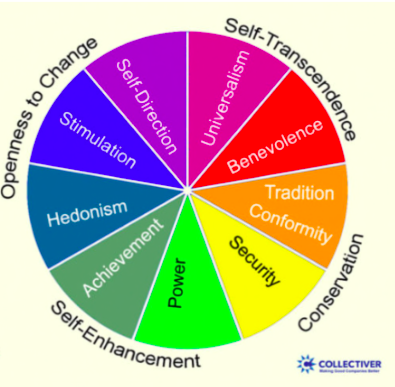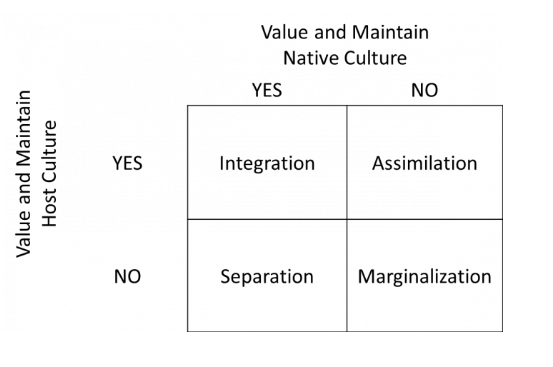Module 2: Families in a Canadian Context
1/23
There's no tags or description
Looks like no tags are added yet.
Name | Mastery | Learn | Test | Matching | Spaced |
|---|
No study sessions yet.
24 Terms
Prejudice/Stereotypes
Not always bad
Not all negative/racist
Problematic: placing judgment on them based on groups
Ethnocentrism
You use your cultural group as how you judge other groups
Eg. Using Western as the baseline when comparing cultures
What is “good” emerges from one's own cultural
The dominant group uses themselves as the reference group
Prejudice
Forming an opinion without direct experience
Prejudging however does not always mean bad
The most obvious examples are racist/ignorant
Stereotypes
Characteristics of a cultural group placed on another
Exaggerated to a repulsive point
Often overlaps with prejudice
The presentation that owns culture is the ‘norm’
These become automatic
Education and culture contrast → reduce stereotypes
Automacy of Activation
When people are under stress = More primitive parts of the brain are concerned about ‘the other’
Eg. → stress from 9/11 = racism against Muslims
Start activation stereotypes when under stress
Socialization
Communicating Through Generations To Navigate Society
Conformity and transmission of culture
Types of Conformity
Low vs High-Class Families
Forms of Enforcement
Different economic families use different methods
How to Successfully Navigate The Environment
Norms of Parents/Child Relationships
Transgenerational Transmission of Values
What values are important to transmit from one generation to the next
Is there a sense of continuity or change?
Change is good... So is continuity
Cultural shifts in values - conflict is an essential component (develop in response to conflict)
Ways of Organizing Cultural Values
Individualism vs Collectivism
Individualism → importance of individual goals and independence
Collectivism → primacy of group goal, interdependence and orientation to family, acceptance of duties and obligations toward groups
Kohlberg Moral Reasoning:
Community: Our collectivistic approach to what is morally right is in relationship with my community. (collectivistic)
Autonomy: Our ability to make our own decisions (individualistic)
Divinity: Many cultures have religious scripts that evaluate morals
All cultures have different amounts of each of these
Schwartz: Hierarchy of Values:
Power
Achievement
Hedonism → pleasure and gratification of one's self
Stimulation
Self-direction
Universalism → understanding of protection
Benevolence → enforcement of the welfare of those close in contact
Tradition
Conformity → do not violate social ‘norm’ expectations
Security
Opposites across from each other in pic
Individualist = left side
Colelctivitsc = right side
All cultures have all → some are diminished, some are used

Cross-Cultural Adaption
Immigration→ Dominant vs Indigenous Cultures
More immigration than we have seen historically
Not all countries are the first ones they are not the dominant group (in Canada indigenous are not dominant)
Cross-Cultural Adaption
Acculturation
Two cultural groups come into contact with one another
2 groups come together from different backgrounds
Smaller groups usually have to adapt to the larger
Cross-Cultural Adaption
Encultraltion
Process of learning values of a second culture
Form of socialization
Learning values of an original cultural group
Cross-Cultural Adaption
Adaptation
Families adapt to living within new cultures
Immigrant Language Growth
New immigrants are using their language
More diversity
European languages decrease use in Canada
Process of Adaptation Berry (2006)
Process of adaptation considers levels of both acculturation and enculturation

Indigenous Knowledge and Family
Vygotsky
Tools and Practices
Language as a tool in development (fundamental culture)
Being separated and told your culture is no good disrupts this fundamental part of development
Language and cultural coping mechanisms stripped away
Indigenous Knowledge and Family
Bowlby
Attachment
A child forcefully separated from a parent
A child goes through a period of detachment (devastation to mother and child)
Emotional response narrowed and not as adaptive
Both Dominant and minority adapt when they come in contact with one another
Consequences more prevalent in minority
Adaptation requires hard work
Start listening to indigenous groups to prompt adaptation of the dominant group
Family Traditions and Customs
Video 1+2 Okanagan Women Elder Stories
It is important to get back to own roots
Furr bows
Rose bushes → Wash the house with rose bushes for the presence of disease to keep spirits out
Burn the personal clothing of those deceased
Family Traditions - Belief and Language
Video 1+2 Okanagan Women Elder Stories
Giving names → no ceremony because it is personal within the family
Children seen and not heard
Names were made public ceremony but not traditionally in culture
Indigenous families: Who Do You Call Family?
The Western definition of family (nuclear family) cannot be extended to indigenous
Family is based on social, cultural, geographic, political, and economic aspects
Explored conceptualization of indigenous families in Canada
Findings → The perspective of indigenous families may be framed through a personal or institutional perspective
Personal Level → Perception of an indigenous family was influenced by culture, specific socialities, language, childrearing practices, and residential locations
Institutional level → defined through demographic and legal terms and influenced by temporal change (through generally a non-indigenous lens)
Suggests that current Western definitions of the family may not accurately represent the indigenous populations
Indigenous Families and Households in Canada: A Tale of Statistical Disadvantage
Currently a knowledge gap concerning the competition in Indigenous households and their evolution over time
Essential to improve our understanding of their social organization and its relationship to well-being and develop appropriate policies
Do not have proper statistical representation
Data availability → about indigenous families could be expanded by increasing the sample sizes of existing surveys
Data accessibility → could be improved by ensuring that households in census reports and related produce
Data exploitability → could be promoted by including more and finer indicators or family structure and living arrangements in public-use microdata
Hidden Burdens: A Review of Intergenerational, Historical, and Complex Trauma, Implications for Indigenous Families
Consider whether understanding of stressed human capacity as described by family members of various generations affected by traumatic events may be increased through exploring the developmental implication of complex trauma
Informed support for individuals and families combined with political advocacy at a system level is critical in intergeneration trauma work to break historical patterns affecting family development and interaction
Sociocultural, psychological relational, family system and genetic and biological models contribute to the appropriate assessment of survivors and their families
Gentis dispositions → Understanding the effects of early stress to access tools and resources to strengthen buffers
Early attachment is important in managing trauma presented
Pscyheduactional information to help survivors cope with unspoken and unidentified trauma
Need to acknowledge the role of public policy on intergenerational trauma
Need to address issues of poverty, inequality, oppression, and discrimination